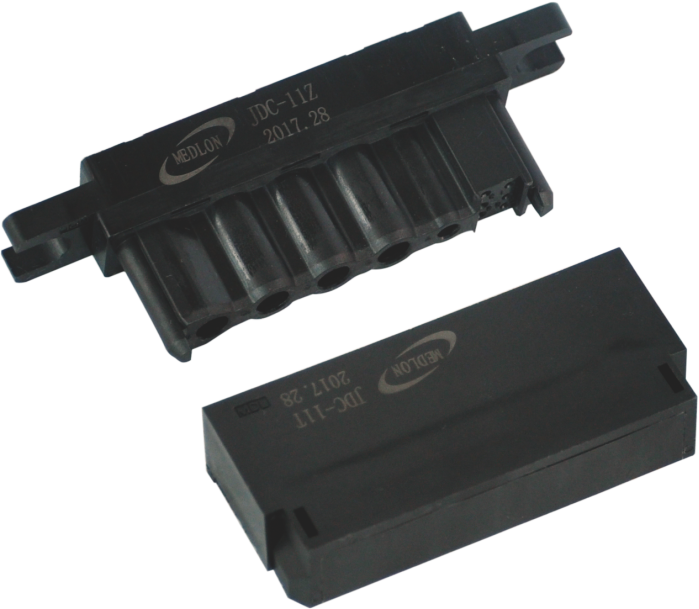



feature: Input voltage: maximum 220V, minimum 110V Output voltage: generally 5V or 12V Input current: Varies according to output voltage and load power Output power: depends on load capacity and output voltage Working frequency: generally 50Hz or 60Hz Advantage: 1. Versatility: Combination AC-DC and split power options are available, and the module can be configured to fit most designs 2. Convenient and flexible: easy to maintain and replace. 3. Safe and reliable: waterproof, dustproof and durable, 4. Quick connection: plug-in connection, can be quickly connected and disconnected, convenient for daily use 5. Multiple interface options: such as circular connectors, square connectors, threaded connectors, etc.
Specifications
| Component Type | pcb power connector |
| Gender | Header/Receptacle |
| Header Pin Pattern (Left to Right) | Power/Signal |
| Number of Contacts (Power) | 4 |
| Number of Rows (Power) | 1 |
| Number of Contacts (Signal) | $keyworrd{12} |
| Number of Rows (Signal) | 8 |
| Termination Style | Solder To Board |
| Orientation | Right Angle |
| Pitch (Power) | 6.35mm (0.250in) |
| Pitch Signal) | 2.54mm (0.100in) |
| Current Rating | $keyworrd{13}A max. for One Powered Contact |
| Resistance (Power Contact) | Maximum for mated pair is 2mΩ |
| Resistance (Signal Contact) | Maximum for mated pair is 20mΩ |
| Dielectric Withstanding Voltage | $keyworrd{14}V DC for power ; $keyworrd{15}V DC for signal contacts |
| Durability (Mating cycles) | $keyworrd{16} Mating Cycles |
| Operating Temperature Range | -$keyworrd{13}°C to +125°C |
| Material Housing | PPA, glass fiber reinforce, UL94V-0 |
| Plating Contact area | 0.76μm (29.921μin) Gold |
| ail Plating (Signal) | 1.98μm (78μin) Tin |
| Tail Plating (Power) | 1.98μm (78μin) Tin |
| Guide Feature | Guide Pin Pocket |
| Packaging | Cartons or Tray |
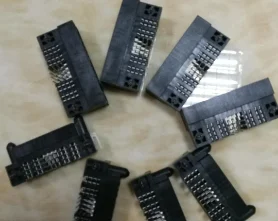
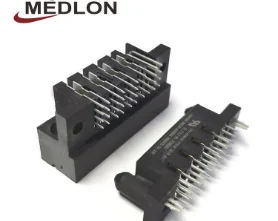
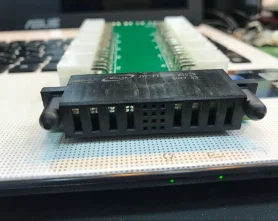
1.Does the size and configuration of a pcb power connector affect its performance?
We are a professional pcb power connector company dedicated to providing high quality products and services. Yes, the size and configuration of a power connector can affect its performance. The size of the connector determines the amount of current it can handle, and the configuration of the connector affects the amount of power it can deliver. For example, a larger connector can handle more current than a smaller one, and a connector with more pins can deliver more power than one with fewer pins.
2.About pcb power connector R&D capabilities
Power connector R&D capabilities vary from company to company. Some companies specialize in developing custom power connectors for specific applications, while others may have a more general focus on developing power connectors for a variety of applications. Companies may also specialize in developing power connectors for specific industries, such as automotive, medical, or industrial. Additionally, some companies may have the capability to develop power connectors with specific features, such as waterproofing or high-temperature resistance. Companies may also have the capability to develop power connectors with specific certifications, such as UL or CE.
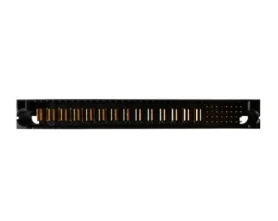
3.Are there any color code standards for different pcb power connectors?
Our products & services cover a wide range of areas and meet the needs of different fields. Yes, there are color code standards for different power connectors. The most common color code standards are the International Electrotechnical Commission (IEC) and the National Electrical Manufacturers Association (NEMA). The IEC color code standard is used for most European countries, while the NEMA color code standard is used in the United States.
4.About pcb power connector raw material procurement system
The Power Connector Raw Material Procurement System is a software solution designed to streamline the procurement process for power connector raw materials. It provides a centralized platform for suppliers to submit bids, and for buyers to compare and select the best option. The system also includes features such as automated order tracking, inventory management, and supplier performance tracking. This system helps to reduce costs, improve efficiency, and ensure that the best quality materials are purchased.
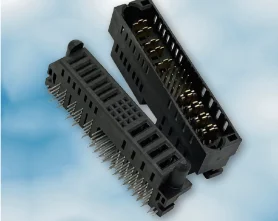
5.What is the typical voltage and current rating for pcb power connectors?
pcb power connector is not a product only, but also can help you comes to money-making. The typical voltage and current rating for power connectors depends on the type of connector being used. For example, a standard IEC 60320 C13 connector is rated for 10A at 250V.
6.How does a pcb power connector differ from a regular electrical connector?
Our mission is to provide customers with the best solutions for pcb power connector. A power connector is designed to carry higher currents than a regular electrical connector. Power connectors are typically used to connect power supplies, motors, and other high-power devices. They are usually larger and sturdier than regular electrical connectors, and they often have additional safety features such as locking mechanisms and strain reliefs.

7.Can pcb power connectors be used for both AC and DC power?
We have established a good reputation and reliable partnerships within the pcb power connector industry. No, power connectors are designed to be used for either AC or DC power, but not both.
8.About pcb power connector quality system
A power connector quality system is a set of processes and procedures that are used to ensure the quality of power connectors. This system includes the design, manufacture, testing, and maintenance of power connectors. It also includes the inspection and certification of power connectors to ensure they meet the required standards. The system also includes the tracking and monitoring of power connector performance over time. The system should also include the development of corrective action plans to address any issues that arise.

9.Are there any options for tool-less installation of pcb power connectors?
Yes, there are several options for tool-less installation of power connectors. These include push-in connectors, twist-lock connectors, and snap-in connectors. Push-in connectors are the most common type of tool-less power connector and are designed to be inserted into a power socket without the need for any tools. Twist-lock connectors are also available and are designed to be twisted into place. Finally, snap-in connectors are designed to be snapped into place without the need for any tools.
10.Are there any security features available for pcb power connectors?
Our products & services cover a wide range of areas and meet the needs of different fields. Yes, there are several security features available for power connectors. These include locking mechanisms, tamper-proof seals, and keyed connectors. Additionally, some power connectors are designed with built-in surge protection to help protect against power surges.

11.How do you determine the appropriate wire gauge for a pcb power connector?
We adhere to the principle of quality first and have a complete production quality management system and quality inspection process. The appropriate wire gauge for a power connector is determined by the current rating of the connector. The current rating is usually printed on the connector itself, and the wire gauge should be chosen to ensure that the current rating is not exceeded. The National Electrical Code (NEC) provides tables that list the maximum current rating for different wire gauges.
12.Can pcb power connectors be used for data transmission as well?
Our mission is to provide customers with the best solutions for pcb power connector. No, power connectors are not designed for data transmission. They are designed to carry electrical power from one device to another. Data transmission requires a different type of connector, such as an Ethernet or USB connector.
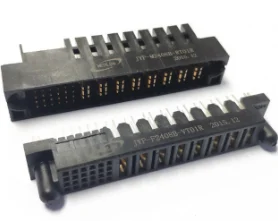
13.How does impedance affect the performance of a pcb power connector?
As one of the pcb power connector market leaders, we are known for innovation and reliability. Impedance affects the performance of a power connector by limiting the amount of current that can flow through the connector. If the impedance is too high, the connector will not be able to handle the amount of current needed to power the device. If the impedance is too low, the connector will be overloaded and may cause damage to the device.
14.Are there any options for waterproof or dustproof pcb power connectors?
As one of the top pcb power connector manufacturers in China, we take this very seriously. Yes, there are several options for waterproof and dustproof power connectors. These include IP67 rated connectors, which are designed to be waterproof and dustproof, as well as waterproof and dustproof cable glands, which are designed to protect cables from water and dust. Additionally, there are several types of waterproof and dustproof junction boxes, which are designed to protect electrical connections from water and dust.

15.Can a pcb power connector handle high temperature and vibration?
Our mission is to provide customers with the best solutions for pcb power connector. Yes, power connectors are designed to handle high temperatures and vibrations. They are typically made of materials such as stainless steel, aluminum, and brass, which are all resistant to high temperatures and vibrations.
Tag:edison power connector,motherboard sata power connector,usb power connector types